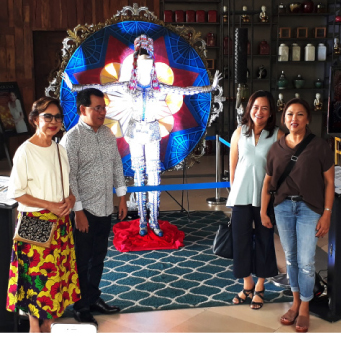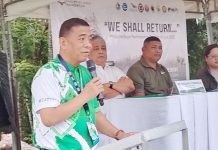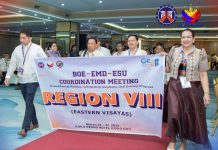
PALO, Leyte – The lecture on early Visayan script opened the series of activities lined up for the 75th Leyte Landings Commemoration this October 20.
The 3rd Quincentennial Lecture Series, entitled, ‘Surat: The Early Visayan Script’ is also part of the nationwide campaign on the 500th celebration of First Easter Mass in the Orient or the First Mass in Limasawa which will be marked on March 30, 2021.
The activity, held on Thursday (Oct.10) is organized by the National Quincentennial Committee in partnership with the National Historical Commission of the Philippines (NHCP), the Presidential Communications Operations Office (PCOO), provincial government of Leyte, and the municipal government of Palo.
The discussion focused on the early writing system in the Philippines prior to the arrival of the Spaniards.
University of the Philippines-Manila Health Sciences professor and Eastern Visayas resident historian professor Rolando Borrinaga served as the lecturer attended by secondary school students from Ormoc City and from several schools in Leyte.
“As Filipinos we need to have the historical and cultural awareness,” Borrinaga said.
Learning that there is an ancient script or way of writing of Filipino will help the younger generations to know that prior to the arrival of Spain or Western Colonizers, there is already a civilization in the country that has a system of writing called the ‘baybayin’.
“It’s not difficult to learn how to write our ancient writing. We must know to write in our old way,” Borrinaga said.
Borrinaga said that learning the ancient way of script is not hard as this can be studied within two to three hours of workshop.
In April 2018, the House Committee on Basic Education and Culture has approved House Bill 1022 or the proposed “National Writing System Act” that seeks to declare baybayin as the country’s national writing system.
The bill received the support of the Department of Education (DepEd) and the National Commission for Culture and the Arts (NCCA).
Leyte Governor Leopoldo Dominico Petilla, who welcomed the participants in the lecture, said that younger generations should make sure to know their history have an accurate and correct information.
“To help solve our country’s problems, we need to understand and learn the lesson of the past for the new generation to be better equip with knowledge and skills to address challengers,” he said.
Part of the lecture is the display of the national costume that Miss Universe Catriona Gray wore during the last year’s Miss Universe competition held in Thailand.
Prior to the competition, Gray along with her team visited Tacloban and talked with local artist Dante Enage and Borrinaga on how to come up with the design of her national costume.
The national costume of Gray was inspired by the tattoo motifs of Visayas ancestors called by the Spanish as “pintados”.
Shown in the Boxer Codex, it contains pages of the earliest known limned illustrations of Filipino ancestors described as “accustomed to paint their bodies with some very elegant tattoos.”
The display the national costume Gray used during the Miss Universe pageant will be viewed until October 24 at the lobby of the Leyte Oriental Hotel, this town. (ROEL T. AMAZONA)



